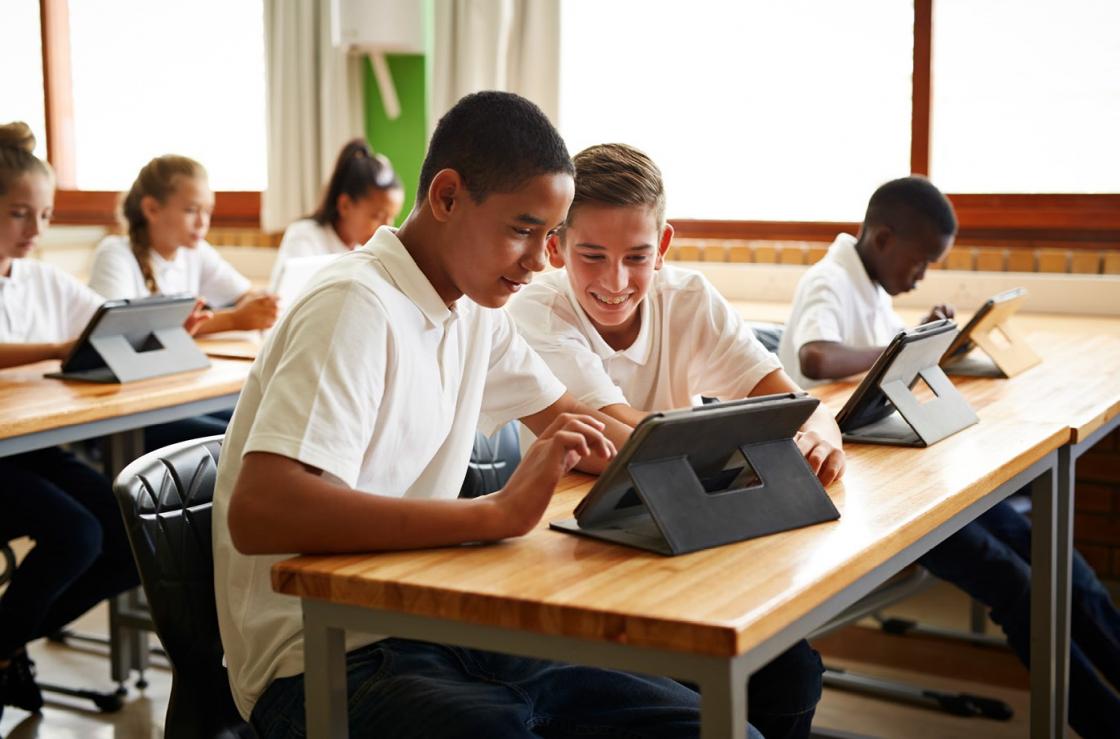Insight
Creating safe, inspirational and functional learning spaces

Date Published
18/03/2021
Reading time
5 minutes
Even before Covid-19 created a hiatus in the management of school buildings, many of the UK’s schools weren’t in great condition. Capital funding in education for maintenance has plummeted in the previous decade and, even with the Government’s promise to increase spending in the coming years, by 2023 per-pupil funding will barely reach the level of 2009 in real terms.
Schools have managed the imposed funding pressures through the public sector pay cap, which has kept teachers’ salaries in check, and by becoming more productive — there are now more pupils per teacher in secondary schools than there were a decade ago (Institute for Government 2019). They’ve also responded to the lack of funding by maintaining their buildings less, for example there’s a £6.7bn backlog of repairs across England's 21,000 schools (BBC).
Many school buildings are very old, especially in the primary sector; they’re rundown spaces that aren’t inspirational learning environments or even functional, and parts of some could be considered unsafe (BBC).
With schools welcoming their pupils back in March 2021, we can see that the Coronavirus pandemic has put new demands on their buildings. Schools have had to find space to teach pupils in bubbles, carry out mass Covid-19 testing, meet social distancing requirements and deliver lessons remotely. The layout of many schools doesn’t allow for unrestricted air flow and, in response, some need to open windows at a time of year when it’s both unsuitable and unsustainable.
But creating new space is costly and there are concerns that the extra space may be unnecessary after the pandemic.
So how should schools make the most of constrained budgets to address the maintenance backlog and the pressure for more space? What can they do to make their buildings more resilient in the future? Here are five things that they should focus on.
Use the existing space better
Many schools set their sights on new-builds and extensions. But it’s much more cost effective to reimagine and refurbish your existing space to meet your new needs — and the regulatory requirements are then easier to manage. With subtle alterations, you can eliminate challenges such as cramped spaces, a lack of natural light and airflow, and poor acoustics.
For example, spaces in modern schools are allowed to be larger than previous guidelines advised and many schools have in-built flexibility that would enable them to merge two rooms into one, making better use of classrooms, corridors and other linked spaces. Think in terms of how pupils move through spaces and how you can logically re-arrange rooms to optimise movement and reduce congestion.
Think about how your building supports different year groups and how you need your spaces to work. What are the critical circulation flow patterns— some spaces will need to be available for pupils of all ages while others can be more age-specific? Can you use external circulation pathways to reduce internal congestion?
Take advantage of the funding that’s available to you
The Condition Improvement Fund was established to help schools to improve the condition of their learning environments and to make small expansions. However, many schools don’t apply because staff members are too busy or unsure how to best represent the school’s needs in bidding.
The Government has announced further new funding for school repairs and building works. It has set aside £1bn for 50 large projects — the first round of which is planned as a 10-year programme. There will also be an extra £560m made available for upgrades and repairs to schools for the next academic year — and a previously-announced £200m for improving further education colleges will be brought forward.
Reduce your energy bill
Energy is one of schools’ highest expenditures — think about how you can save money on your energy bill and invest it in your buildings.
Salix and SEEF funding can help you to replace your lighting with brighter, energy-efficient LEDs, improving the teaching and learning environment and reducing your energy bills. It’s also a great talking point for your pupils.
Review how you manage safety and compliance
Safety and compliance can never be put to one side, even during a pandemic. Indeed, that’s when safety becomes even more critical. Ensure that your systems are tested and serviced regularly — it maintains their efficiency and reliability and will give you early warning of any deteriorating components or systems.
Find a reliable partner for your responsive maintenance – having 24 / 7 support will enable you to respond to any building emergencies or minor repairs, preventing learning from being disrupted and minor issues from escalating to urgent repair.
Use your space to support health and wellbeing
Mental health is a growing concern across all ages. The State of the Nation Report highlights the negative impact that Covid-19 has had on our pupils. Schools are not just places to learn: they’re vital social places that affect our children’s physical and mental wellbeing. The school environment can influence pupils’ moods — for example, natural light can relieve anxiety and a tidy, well maintained building can encourage better behaviour.
Crowds, loud noises and, more recently, Covid-19 restrictions can make some pupils uncomfortable. Consider introducing small, quiet areas where pupils can relax and get away from the hustle and bustle of the classrooms and corridors. Inviting spaces may encourage pupils to sit and chat, to share their emotions and feelings.
Think about your dining rooms and whether they promote healthy nutrition. Are you using your outdoor spaces optimally? They should be safe, excite the senses and facilitate pupil bubbles if necessary.
Find out more
To find out how we can help you to improve your school buildings for your pupils and staff, contact our property development officers.
Make an Enquiry
Contact us to enquire about our servicesOr, call us on 0333 300 1900
